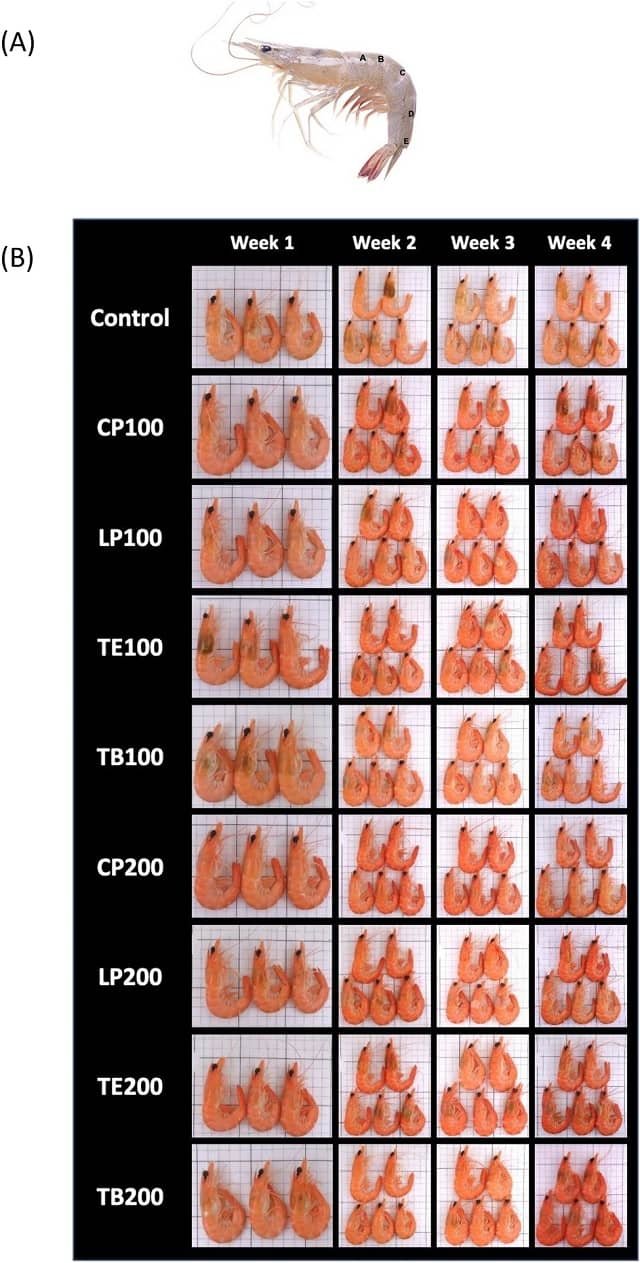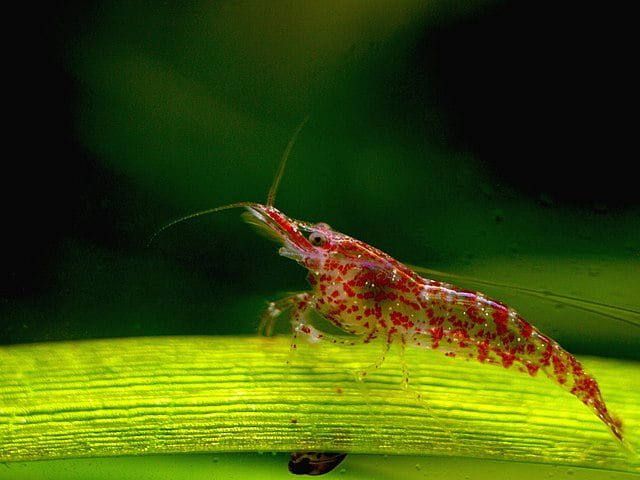
In the realm of aquaculture, where the well-being of marine life depends on a delicate balance of nutrition, health, and color, astaxanthin emerges as a nutritional superstar. This powerful antioxidant has the ability to alleviate oxidative stress and intensify the vibrant hues of crustaceans. Notably, astaxanthin plays a pivotal role in the development of black tiger shrimp (Penaeus monodon).
Traditionally, this beneficial compound was sourced from natural origins, but today, synthetic astaxanthin has gained prominence due to its technological and economic advantages. The debate over whether synthetic astaxanthin can rival the effects of its natural counterpart has prompted recent research.
Scientists from Zhejiang Ocean University and Zhejiang NHU Co. conducted a study that evaluated the effects of synthetic astaxanthin and natural astaxanthin (dietary supplementation with Haematococcus pluvialis and Phaffia rhodozyma) on the growth, body color, fatty acid composition, and antioxidant capacity of black tiger shrimp.
Importance of Astaxanthin for Shrimp
Several studies have confirmed that astaxanthin has positive effects, such as promoting growth, survival, and reproduction of crustaceans, including disease resistance and reducing oxidative stress. Crustaceans cannot synthesize astaxanthin, and thus, they must obtain it from the food they consume.
Various species of microalgae synthesize astaxanthin that is used in shrimp feed. However, the extraction processes for natural astaxanthin are complex, have low production rates, and high costs.
Synthetic Astaxanthin vs. Natural Astaxanthin
The study compared the performance of synthetic astaxanthin with natural astaxanthin derived from Haematococcus pluvialis and Phaffia rhodozyma in the diet of black tiger shrimp. The goal was to shed light on how these two variants affect various aspects of shrimp health and development.
Growth Performance
Interestingly, the results showed that, compared to the control group (no astaxanthin supplementation), only synthetic astaxanthin led to a significant increase in both the weight gain rate (WG) and specific growth rate (SGR). Additionally, the feed efficiency ratio (FER) was elevated in the synthetic astaxanthin group. This suggests that synthetic astaxanthin is more effective in promoting shrimp growth.
Color Enhancement
For many consumers of aquaculture products, the aesthetic appeal of their crustaceans is of paramount importance. All three types of astaxanthin enhanced the body color of black tiger shrimp by increasing astaxanthin deposition. The highest value of (a*) in the shell and muscle was observed in the synthetic astaxanthin group, making it a clear favorite in this regard.
Stay Always Informed
Join our communities to instantly receive the most important news, reports, and analysis from the aquaculture industry.
Fatty Acid Composition
Healthy fats, such as n-3 polyunsaturated fatty acids (n-3 PUFA), are essential for the overall well-being of shrimp. The study revealed that synthetic astaxanthin significantly increased the n-3 PUFA content in the shrimp’s muscle, indicating its positive influence on the fatty acid composition.
Antioxidant Capacity
Oxidative stress can have detrimental effects on shrimp health. Astaxanthin, whether synthetic or natural, demonstrated its ability to inhibit the activities of glutamic oxaloacetic transaminase (GOT) and glutamic pyruvic transaminase (GPT) in the hemolymph of the shrimp. It also reduced the levels of reduced glutathione (GSH) and malondialdehyde (MDA) in the hepatopancreas, suggesting its strong antioxidant capabilities. This, in turn, improved the structural integrity of the hepatopancreas.
Stress Resistance
The ability to withstand stress is a valuable trait in the shrimp industry. The study found that all three types of astaxanthin significantly improved the shrimp’s ability to resist stress caused by transportation simulation.
Conclusion
“In the present study, the positive effects of three types of astaxanthin in black tiger shrimp diets were compared. Compared to natural astaxanthin, synthetic astaxanthin is more suitable as a feed additive in terms of growth performance, body color, and n-3 PUFA metabolism,” report the scientists.
The results of this study paint a clear picture: synthetic astaxanthin outperforms its natural counterparts in several key aspects. It not only promotes shrimp growth but also enhances their body color and improves the fatty acid composition in their muscles. Additionally, it demonstrates potent antioxidant properties and strengthens the shrimp’s ability to cope with stress.
As such, synthetic astaxanthin emerges as a superior feed additive for promoting the healthy and sustainable development of the shrimp industry.
The study was funded by The Key Research and Development Program of Zhejiang Province.
Contact
Qiang Chen
Department of Aquaculture, Zhejiang Ocean University
Zhoushan 316000, China
Email: chenqiang@zjou.edu.cn
Reference (open access)
Shuting Huang, Qiang Chen, Mingmin Zhang, Songming Chen, Jieyu Dai, Yuanxin Qian, Yangyang Gong, Tao Han. 2023. Synthetic astaxanthin has better effects than natural astaxanthins on growth performance, body color and n-3 PUFA deposition in black tiger prawn (Penaeus monodon), Aquaculture Reports, Volume 33, 2023, 101816, ISSN 2352-5134, https://doi.org/10.1016/j.aqrep.2023.101816.
Editor at the digital magazine AquaHoy. He holds a degree in Aquaculture Biology from the National University of Santa (UNS) and a Master’s degree in Science and Innovation Management from the Polytechnic University of Valencia, with postgraduate diplomas in Business Innovation and Innovation Management. He possesses extensive experience in the aquaculture and fisheries sector, having led the Fisheries Innovation Unit of the National Program for Innovation in Fisheries and Aquaculture (PNIPA). He has served as a senior consultant in technology watch, an innovation project formulator and advisor, and a lecturer at UNS. He is a member of the Peruvian College of Biologists and was recognized by the World Aquaculture Society (WAS) in 2016 for his contribution to aquaculture.




